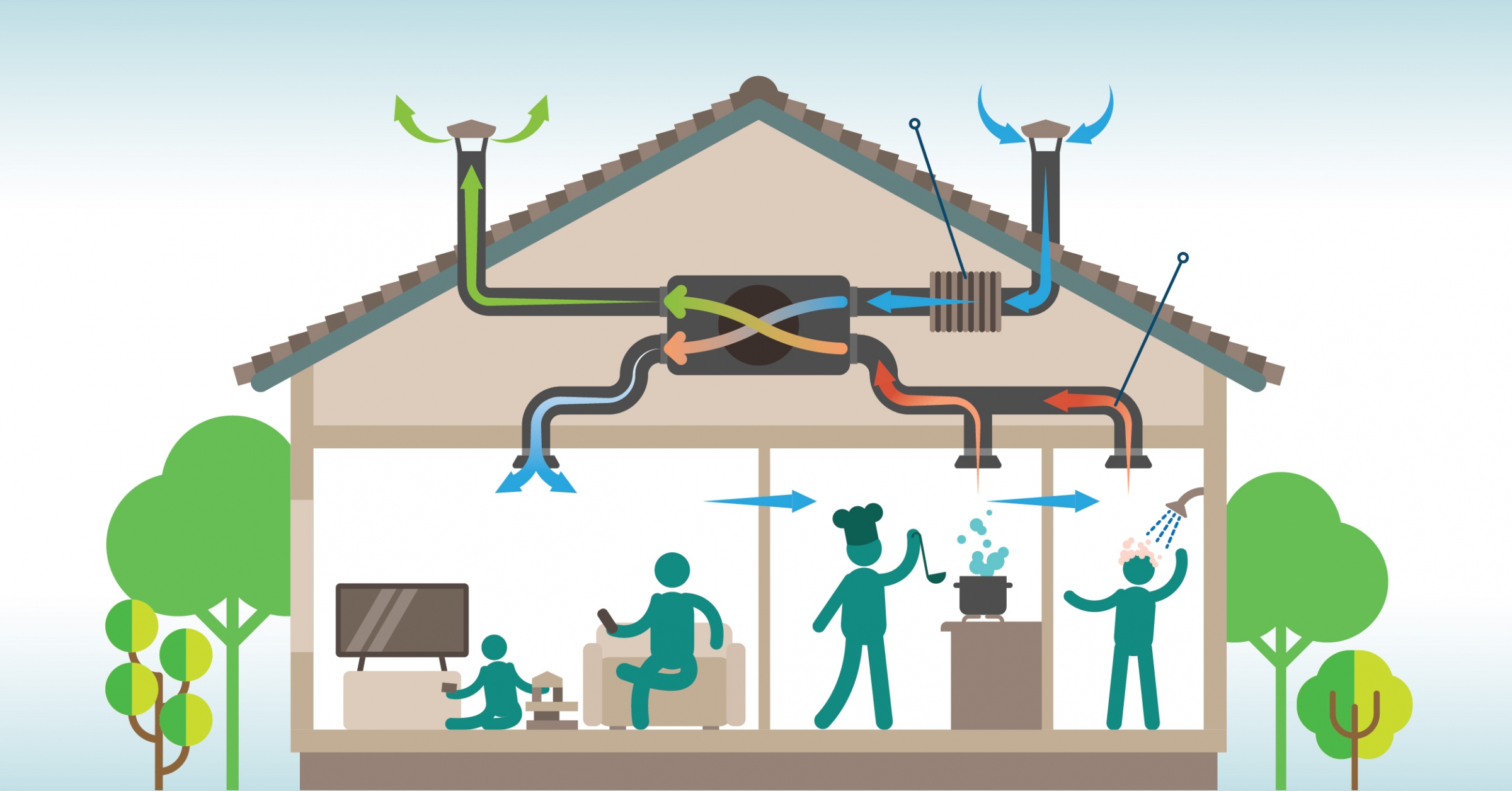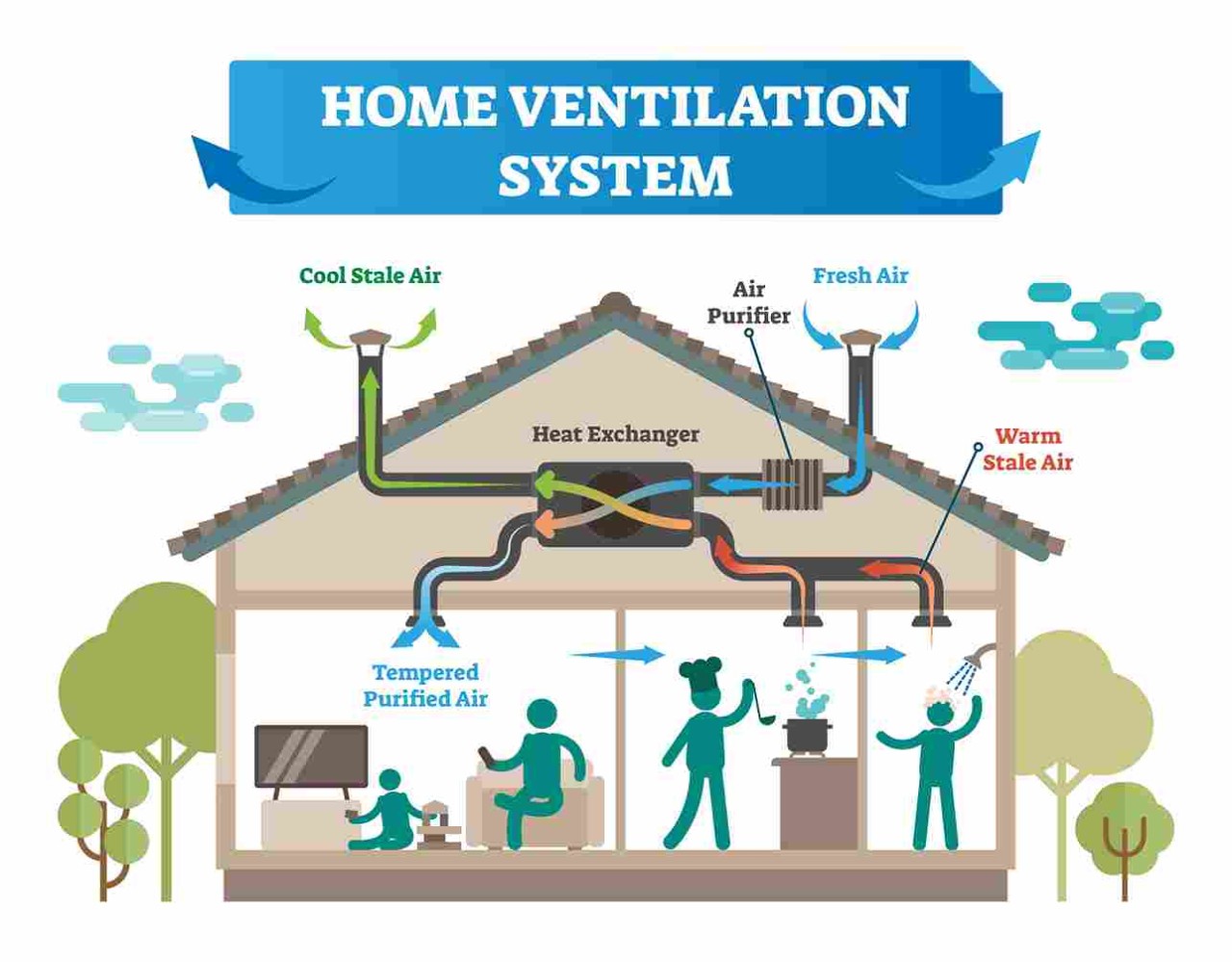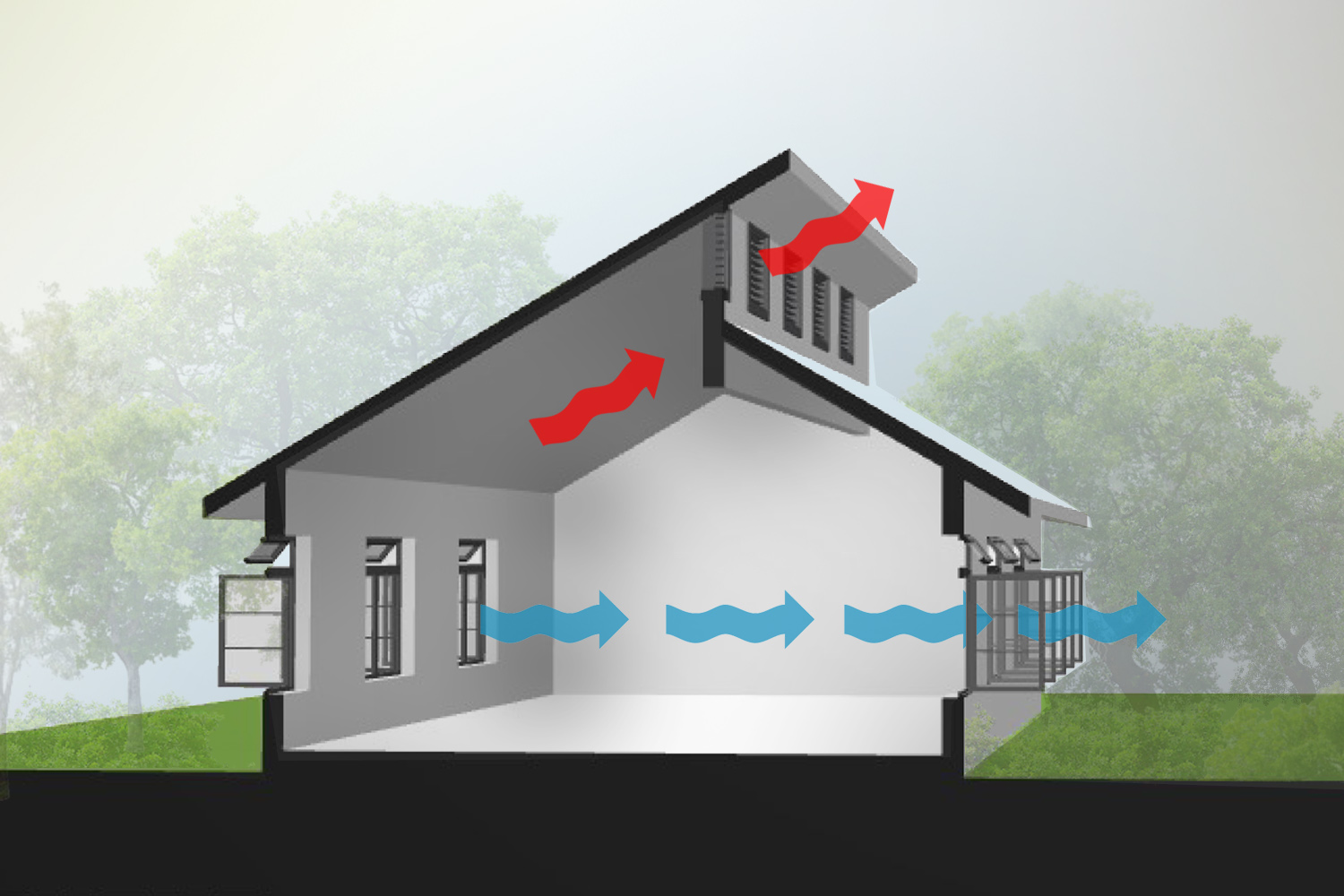Recognizing the Relevance of Home Ventilation for a Healthier Living Setting
Home ventilation plays a vital role in preserving a healthy living atmosphere. It assists in the exchange of outdoor and indoor air, which is very important for improving air high quality. Without appropriate ventilation, homes can come to be reproducing grounds for allergens and pollutants. The consequences of insufficient air flow can be considerable. This brings up the query of exactly how house owners can properly apply air flow strategies to safeguard their health and health. Comprehending these methods is important.

The Basics of Home Ventilation
Home air flow serves as a necessary component of indoor air top quality and convenience. It entails the procedure of exchanging stagnant interior air with fresh outdoor air, thus lowering moisture and controlling temperature level. Appropriate ventilation systems can consist of all-natural techniques, such as open windows and vents, along with mechanical systems, such as exhaust followers and air exchangers. Effective home air flow assists avoid issues like interior mold development and the build-up of hazardous bits. It also improves overall energy performance, as well-ventilated rooms can maintain comfy temperature levels with less dependence on home heating and cooling systems. Recognizing the essentials of home air flow is important for property owners seeking to develop a healthier living environment on their own and their households.

Typical Resources of Indoor Air Air Pollution

Although several might not understand it, indoor air pollution can originate from various sources within a household. Common factors consist of unstable organic compounds (VOCs) emitted from paints, solvents, and cleaning items. Family devices, such as gas cooktops and fire places, can launch unsafe gases like carbon monoxide gas and nitrogen dioxide. Additionally, mold and mildew and mildew grow in wet areas, launching spores that affect air top quality. Animal dander, dirt mites, and pollen can build up inside your home, further aggravating air pollution degrees. Smoking indoors produces harmful chemicals that linger airborne. Building products, including asbestos and formaldehyde, can off-gas unsafe compounds. Recognizing these sources is important for keeping a healthier interior environment and advertising effective air flow methods.
Health And Wellness Impacts of Poor Ventilation
Indoor air contamination can have significant wellness implications, particularly when ventilation is insufficient. Poor air flow can lead to the buildup of damaging pollutants, such as volatile natural compounds, mold and mildew, and particle issue. This build-up might cause breathing problems, consisting of bronchial asthma, allergic reactions, and persistent obstructive pulmonary illness. People may experience symptoms like frustrations, fatigue, and inflammation of the eyes, nose, and throat. Vulnerable populations, such as youngsters and the senior, are at higher risk for severe health results. Lasting exposure to poorly ventilated atmospheres can also add to much more serious problems, including heart diseases. Making certain correct air flow is essential for maintaining a healthy living setting and reducing the risk of health complications associated with indoor air pollution.
Efficient Ventilation Techniques for Your Home
Proper air flow is necessary for preserving a healthy interior atmosphere, and executing reliable methods can considerably enhance air quality. Homeowners can begin by making certain that exhaust fans are set up in restrooms and kitchen areas to eliminate excess moisture and odors. Opening home windows regularly permits fresh air to flow, especially throughout mild weather. In addition, utilizing air cleansers with HEPA filters can aid capture airborne toxins. For homes with home heating and cooling down systems, preserving a/c systems and transforming filters on a regular basis is vital for peak performance. Including all-natural air flow methods, such as cross-ventilation, can likewise boost air movement. Lastly, securing any leaks in doors and home windows prevents undesirable drafts, which can interrupt controlled air movement, eventually causing improved interior air quality and convenience.
Preserving Optimum Air Top Quality Year-Round
To keep optimal air high quality year-round, home owners must embrace an aggressive approach to managing their interior environment. Consistently checking indoor air high quality is important; this includes checking for contaminants such as dust, mold and mildew, and unpredictable organic substances (VOCs) Carrying out efficient ventilation systems, such as exhaust fans and air purifiers, can substantially minimize you could try here airborne contaminants. In addition, routine maintenance of HVAC systems assurances peak performance and air blood circulation. Home owners ought to likewise consider humidity degrees, as excessive moisture can result in mold and mildew development. Seasonal modifications may require changes in ventilation techniques to suit differing exterior air quality. By focusing on these techniques, property owners can produce a much healthier living area, promoting overall health for all passengers throughout the year.
Frequently Asked Inquiries
Exactly How Can I Tell if My Home Demands Much Better Ventilation?
To identify if a home requires better ventilation, one ought to observe signs such as consistent moisture, mold and mildew development, musty odors, condensation on home windows, or boosted allergy signs and symptoms, suggesting poor air flow and potentially inadequate interior air top quality.
What Are the Indications of Poor Indoor Air Quality?

Can Houseplants Improve Indoor Air High Quality Effectively?
The effectiveness of houseplants in improving indoor air top quality is disputed. While some studies suggest they can absorb toxic substances and generate oxygen, their total effect may be marginal compared to proper air flow and air purification systems.
Just how Frequently Should I Change My Air Filters?
The frequency of air filter modifications usually depends upon usage and filter type. Typically, it is recommended to Homepage replace filters every three months, though houses with pets or allergic reactions may call for even more frequent modifications for ideal performance.
Are There Any Kind Of Specific Ventilation Equipments for Allergic Reaction Sufferers?
Numerous air flow systems, such as HEPA-filtered units, successfully lower allergens in the air. Home Ventilation Melbourne. These systems trap pet dog, dust, and plant pollen dander, providing allergy patients with a cleaner, much healthier interior environment while managing air top quality properly
It promotes the exchange of interior and outside air, which is crucial for enhancing air quality. Home air flow offers as an important component of interior air top quality and comfort. It includes the process of exchanging stagnant interior air with fresh outdoor air, thereby minimizing moisture and regulating temperature level. Interior air contamination can have try these out considerable wellness effects, particularly when ventilation is insufficient. Correct ventilation is vital for maintaining a healthy and balanced indoor environment, and carrying out effective approaches can substantially boost air top quality.